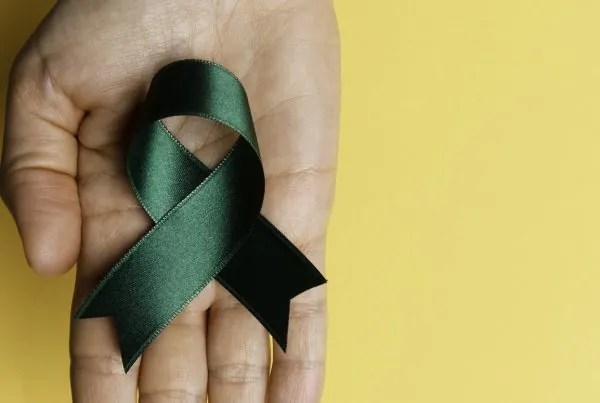“Do I these pants make me look fat?”
“OMG, I feel so fat today!”
“I can’t believe she’s wearing THAT!”
I honestly wish this commentary occurred less than it actually does, but the reality is, it doesn’t. It occurs on a daily basis in the lives of girls (and boys) from elementary school age to women in their older years. It’s the baseline for many conversations and it’s more often than not done without concern for those around them. Think about this: when someone who’s a size 2 says to a friend who’s a size 10 that she feels “fat,” there is an implication of body-image judgment, regardless of intent or level of self-esteem of the person hearing the comment. As soon as we start adding to the ever-present dialogue that one body type is somehow better than another, we inadvertently fuel the fire of low self-esteem and negative body image. In fact, when asked about the consequences of fat talk, Elizabeth Easton, PsyD and clinical director of child and adolescent services at the Eating Recovery Center says, “Negative body image is an easy hook for individuals who struggle with self-esteem or identity to latch onto as a way to feel more confident and even accepted by others.” Fat talk is damaging, no matter how you look at it.
Parents play a huge part in this as both contributors and as allies in our efforts to combat this type of language. We need to be mindful of what we say about ourselves, letting go of the delusion that we are “just talking about ourselves,” because in the eyes of an impressionable young girl or boy, the negative impact is very real. We are our kids’ first teachers, and if we teach them to hate themselves because of our own perceived weight problem, we potentially create a lifetime of body-image issues that can translate into disordered eating and/or eating disorders. I’ll never forget the kindergartener at my son’s school who burst into tears during a dress rehearsal because her costume made her look fat (she was playing Toto!); or the 8-year-old who won’t eat because she’s afraid she might get fat. Neither of these kids have a weight problem: rather, they have a perception problem brought on by the fear-inducing commentary from their parents, peers, and media. Fat talk is a real issue and one we need to ardently address. There are some very real consequences to this constant barrage of body bashing, and it shows in these eating-disorder statistics from NEDA:
- In the US, as many as 10 million females and 1 million males are struggling with an eating disorder such as anorexia or bulimia;
- 80% of American women are dissatisfied with their appearance;
- The mortality rate for 15- 20-year-old females who suffer from anorexia is 12 times the death rate of all other causes of death;
- Anorexia has the highest premature fatality rate of any mental illness;
- 40% of newly identified cases of anorexia are girls 15-19;
- 54% of women would rather be hit by a truck than be fat;
- 81% of 10 year olds are afraid of being fat (Mellin et al., 1991).
- 42% of 1st-3rd grade girls want to be thinner (Collins, 1991).
- 67% of women 15-64 withdraw from life-engaging activities like giving an opinion, going to school, and going to the doctor because they feel badly about their looks;
- Most fashion models are thinner than 98% of most American women (Smolak, 1996);
- Over one-half of teenage girls and nearly one-third of teenage boys use unhealthy weight control behaviors such as skipping meals, fasting, smoking cigarettes, vomiting, and taking laxatives (Neumark-Sztainer, 2005);
- 46% of 9-11 year-olds are “sometimes” or “very often” on diets, and 82% of their families are “sometimes” or “very often” on diets (Gustafson-Larson & Terry, 1992);
- 91% of women recently surveyed on a college campus had attempted to control their weight through dieting, 22% dieted “often” or “always” (Kurth et al., 1995);
- 35% of “normal dieters” progress to pathological dieting. Of those, 20-25% progress to partial or full syndrome eating disorders (Shisslak & Crago, 1995);
- 25% of American men and 45% of American women are on a diet on any given day (Smolak, 1996).
Next time you wonder if you look fat in your outfit, or feel compelled to use body bashing as a conversation starter, name 3 things that are positive about yourself. Challenge yourself to be kinder to YOU so you can affect positive change on those around you. You’re worth it.
For more information on eating disorders:
National Eating Disorders Association’s Information and Referral Helpline: 1-800-931-2237 | www.NationalEatingDisorders.org
References for aforementioned Statistics as documented at NEDA:
Collins, M.E. (1991). Body figure perceptions and preferences among pre-adolescent children. International Journal of Eating Disorders, 199-208.
Crowther, J.H., Wolf, E.M., & Sherwood, N. (1992). Epidemiology of bulimia nervosa. In M. Crowther, D.L. Tennenbaum. S.E. Hobfoll, & M.A.P. Stephens (Eds.). The Etiology of Bulimia Nervosa: The Individual and Familial Context (pp. 1-26) Washington, D.C.: Taylor & Francis.
Fairburn, C.G., Hay, P.J., & Welch, S.L. (1993). Binge eating and bulimia nervosa: Distribution and determinants.
In C.G. Fairburn & G.T. Wilson, (Eds.), Binge Eating: Nature, Assessment, and Treatment (pp. 123-143). New York: Guilford.
Gordon, R.A. (1990). Anorexia and Bulimia: Anatomy of a Social Epidemic. New York: Blackwell.
Grodstein, F., Levine, R., Spencer, T., Colditz, G.A., Stampfer, M. J. (1996). Three-year follow-up of participants in a commercial weight loss program: can you keep it off? Archives of Internal Medicine. 156 (12), 1302.
Gustafson-Larson, A.M., & Terry, R.D. (1992). Weight-related behaviors and concerns of fourth-grade children. Journal of American Dietetic Association, 818-822.
Hoek, H.W. (1995). The distribution of eating disorders. In K.D. Brownell & C.G. Fairburn (Eds.) Eating Disorders and Obesity: A Comprehensive Handbook (pp. 207-211). New York: Guilford.
Hoek, H.W., & van Hoeken, D. (2003). Review of the prevalence and incidence of eating disorders. International Journal of Eating Disorders, 383-396.
Mellin, L., McNutt, S., Hu, Y., Schreiber, G.B., Crawford, P., & Obarzanek, E. (1991). A longitudinal study of the dietary practices of black and white girls 9 and 10 years old at enrollment: The NHLBI growth and health study. Journal of Adolescent Health, 27-37.
National Institutes of Health. (2005). Retrieved November 7, 2005, from
https://www.nih.gov/news/fundingresearchareas.htm
Neumark-Sztainer, D. (2005). I’m, Like, SO Fat!. New York: The Guilford Press. pp. 5.
Shisslak, C.M., Crago, M., & Estes, L.S. (1995). The spectrum of eating disturbances. International Journal of Eating Disorders, 18 (3), 209-219.
Smolak, L. (1996). National Eating Disorders Association/Next Door Neighbors Puppet Guide Book.
Sullivan, P. (1995). American Journal of Psychiatry, 152 (7), 1073-1074.








